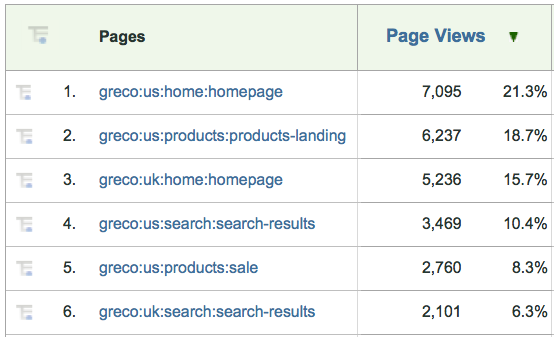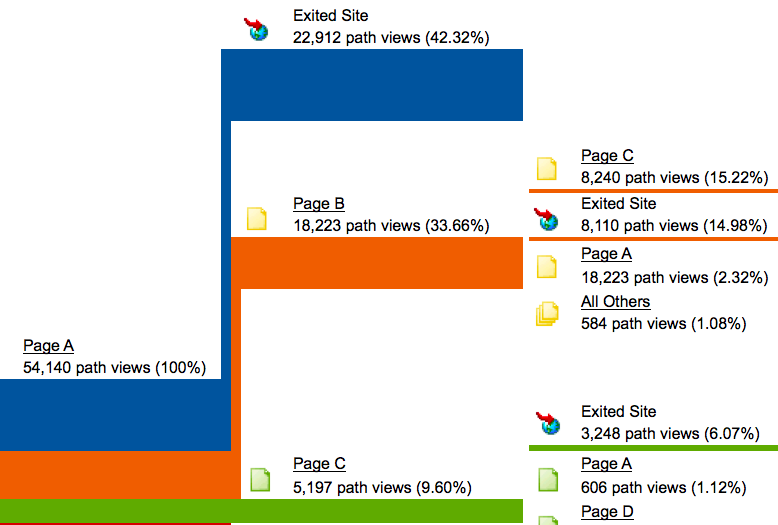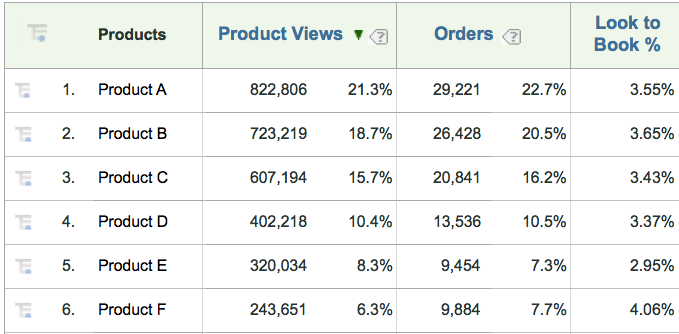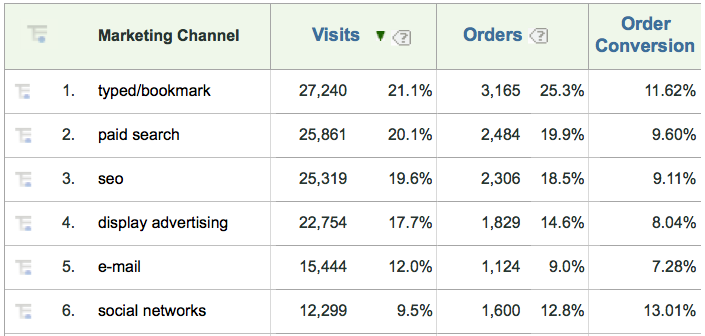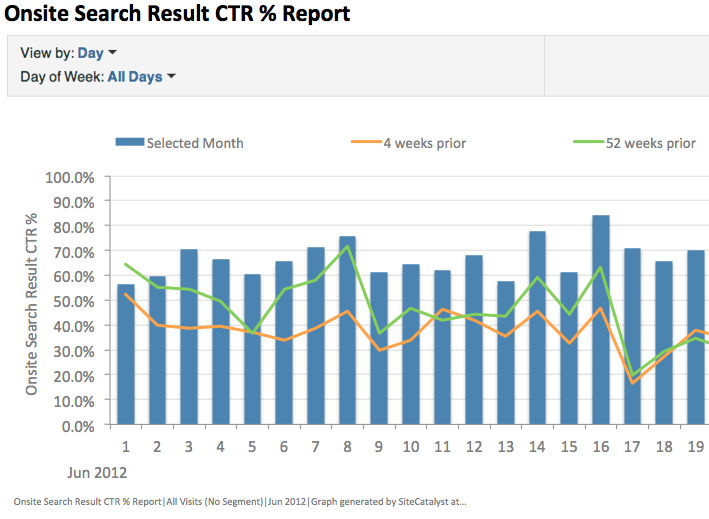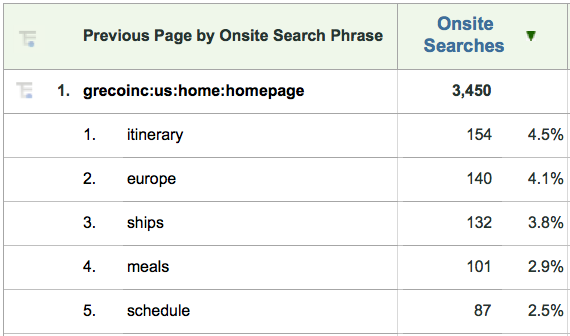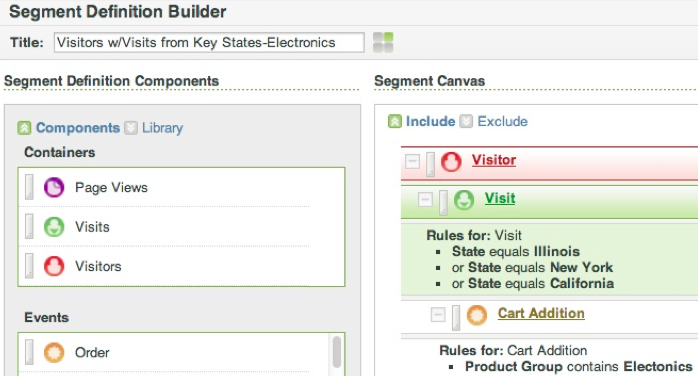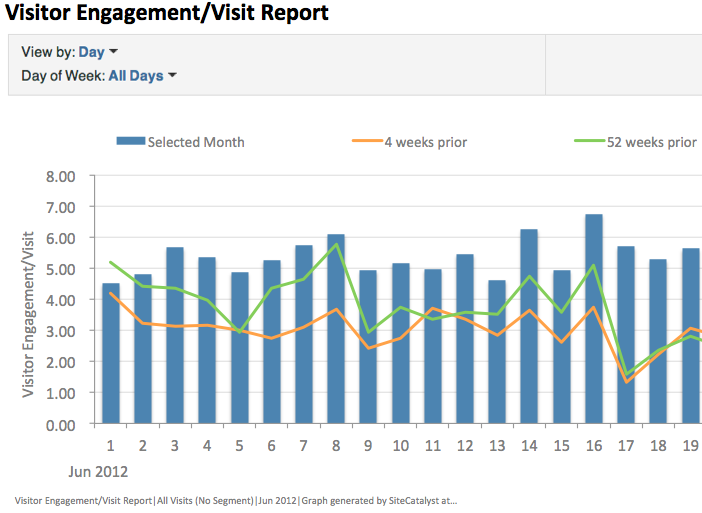How Adobe SiteCatalyst Can Improve Your Web Analytics
As more and more of the world moves online, it has become imperative that organizations get online. Whether this means building traditional websites, mobile websites or mobile apps, it is important to adapt to the platform choices of your customers. As organizations make this shift to online and mobile, they need to understand how customers and potential customers are using these websites and apps. With every click, visitors are telling organizations a tiny bit more about what they are interested in. Intelligent organizations have begun to “listen” to what these visitors are saying with their clicks and use web analytics tools to aggregate these insights and use them to their financial advantage. As a result, the field of “Web Analytics,” which provides this data related to online behavior, has exploded at an incredible pace in the past decade.
Unfortunately, to date, web analytics has been a niche field, understood by only a small faction of organizations, marketers and advertising agencies. One of the reasons for this anonymity is that web analytics is a more technical field than other marketing disciplines. While it is fairly easy to see how companies like Apple and Salesforce.com market their products through large conferences and evangelism, it is often difficult to see how scanning through rows of online data will reap conversion increases. Additionally, success through web analytics often takes time to build versus the immediate success that can occur using social media or popular television commercials.
However, there are a few technology companies that are leading the charge in educating the world on the value of web analytics. One of the technology leaders in the web analytics space is Adobe SiteCatalyst. Originally created by Omniture (prior to being acquired by Adobe), SiteCatalyst is now part of Adobe’s Digital Marketing Suite and is used by many top organizations. Organizations use SiteCatalyst to provide directional guidance to online teams and executives, often with an eye towards improving conversion rates. This conversion can be related to lead generation, additional product purchases or simply getting visitors to view more pages to collect more advertising revenue. By combining data collected in SiteCatalyst and web analysts who know how to manipulate and interpret the data, organizations can identify trends that increase conversions, leading to incremental revenue. However, to identify these potential sources of revenue, organizations have to learn how to apply tools like SiteCatalyst, something that has not previously been taught in traditional business schools.
In this article, I offer some examples of a few ways Adobe SiteCatalyst can be used to improve your organization’s understanding of its customer, as well as its conversion rates.
Content Value
One way organizations use SiteCatalyst is to determine what pieces of online content are being viewed (Figure 1).This content could be website pages, videos, social media “like” clicks or website tools like mortgage calculators. Organizations often spend thousands of dollars creating website and app content, but don’t verify if this investment ultimately pays off. It is not uncommon for organizations to have websites with over 15,000 pages of content, of which only 2,000 pages are actively used. By using SiteCatalyst, it is possible to see which content is useful and which could be removed to save time, money and precious human resources.
Content Pathing
In addition to understanding what content is useful, it is also helpful to see how content is used. This can be accomplished in SiteCatalyst by using a concept called Pathing Analysis. SiteCatalyst can store the order in which content is viewed and report it using flow diagrams to help website or app owners visualize how visitors navigate (Figure 2).This information is helpful to designers and architects who can use it to streamline key processes and increase conversion. Pathing Analysis also allows you to see pages viewed before a specific page, how long visitors spent on each page and how often each page was the last page viewed in a session (exit page).
Product Conversion
Many websites and apps are built to provide product information and sell products. Most traditional retailers have added an online channel to allow customers to buy products at their convenience. SiteCatalyst can be configured to show which products are being viewed, added to cart and purchased (Figure 3).This information allows website owners to identify ways to increase sales. For example, if a certain type of product is frequently added to the online cart, but not purchased, the seller knows that it needs to focus its efforts on moving the product from the cart to purchase, which may be a different course of action than if the problem was getting products into the cart.
Online Marketing Campaigns
In the old days, organizations would advertise by conducting months of consumer research, working with agencies to create an advertising campaign, and then looking to see weeks or months later the impact of that campaign. While this advertising model still exists, in today’s hyper-connected world of social media, marketing campaigns tend to be more nimble. This has created a proliferation of online marketing campaigns whose results can be seen in near real-time. Using tools like SiteCatalyst, marketers can see how online campaigns through sites like Facebook, Google and Yahoo impact website success within minutes of launch and can tweak campaigns accordingly. As such, SiteCatalyst is often the hub of all online marketing campaigns and used to report campaign performance to campaign managers and executives (Figure 4).Additionally, using other products in the Adobe Marketing Suite, it is possible for companies to dynamically change online advertisements based upon past website visits or product inventory. For example, if a visitor to a website has only looked at jackets in the last few visits, you might want to dynamically change the promotion shown on the website home page to feature jacket products so you increase the likelihood of success. This ability to use SiteCatalyst data in real-time allows marketers to maximize the impact of precious marketing budgets.
Onsite Search
Most online properties provide visitors with the ability to search for the items or content. Sites like Google have trained Internet users to search first and click second. As a result, many websites see onsite searches for thousands of terms each month. In these cases, website visitors are implicitly telling you what they are looking for, and it is your job to listen and give them what they want. Unfortunately, it is often the case that websites’ search results are difficult to understand because they are often generated by computer algorithms.SiteCatalyst can help solve this problem. For example, it is easy to capture which onsite search terms visitors use most often and least often. You can also see how often visitors click on your search results (Figure 5).
Once you use SiteCatalyst to see frequently used terms, you can provide customized search results that direct visitors to the exact pages you want them to see. Another great use of SiteCatalyst for onsite search is the ability to see which search phrases yield no results. These are cases in which visitors are looking for content, and you are not providing anything of value. SiteCatalyst can also be used to track how often onsite searches take place and even how often visitors click on items in the search results list.
Another example of leveraging SiteCatalyst for onsite search is investigating what search phrases are being used on each specific page. For example, in Figure 6 you can see what terms visitors are looking for most often when they are searching from the Greco, Inc. home page. This information can be extremely helpful when determining what content to place on key pages like the home page.
Visitor Segmentation
All website visits and visitors are not created equal. SiteCatalyst provides the ability to segment (group) website visits and visitors so that you can analyze their behavior at a granular level. For example, there are some people who come to your website and buy regularly and others who visit but never purchase. There are visitors who spend two seconds on your website (bouncers) and those who spend over twenty minutes. There are visitors who come in the morning and others who come from different continents. Each of these minute data points can have an impact on website success or failure. For example, it may be the case that people coming from Google using branded keywords convert 10% better than those who come from Google using non-branded keywords. You might wonder if first time visitors purchase less often than those who visit each week.Using SiteCatalyst segmentation, you can create overlays of your entire web analytics data set to see how each segment behaves versus other segments. This ability to segment is very powerful and creates a synergistic effect when it comes to the potential number of web analyses that you can perform (Figure 7).
Visitor Engagement
Given the explosive growth of online properties and mobile apps, website conversion often takes place over multiple online interactions. With so much information available with the click of a mouse, website visitors often visit online properties multiple times during the research process. Therefore, it is difficult to know if a website visitor is a success or a failure, since a purchase may only happen in one of several visits. To compensate for this, many organizations have added a “Visitor Engagement” model to their Web Analytics repertoire. Visitor Engagement involves scoring website visits and website visitors to determine if they are “engaging” in the actions that are desired and have been proven to lead to website conversion. For example, if a visitor views three product demonstration videos and views the product pricing page, but doesn’t purchase the product online, it can still be deemed to be a successful visit. In this case, the visit might accrue fifty “engagement points” in SiteCatalyst, which is a way to quantify the micro-successes that took place in the visit and compare it to other visits that had more or fewer engagement points. Over time, visits of a certain threshold of “points” may represent a high degree of success in future visits and can be scored accordingly (Figure 8).Similarly, scores can be assigned to individual website visitors. For example, the visitor in the preceding website scenario might have had a total of fifty “points” prior to this visit and now would have a total of one hundred points after this visit. This score may indicate a likelihood to purchase or a “sweet spot” in which visitors appear to be ready to buy. Visitor Engagement scores can also be used to personalize the website or website promotions accordingly (Figure 9).
The preceding examples represent just a snapshot of what can be learned through web analytics and tools like Adobe SiteCatalyst. Over the next decade, the ability of organizations to accurately collect, aggregate and interpret Web Analytics data will become a true competitive differentiator. Therefore, it behooves all marketers to make sure they are not ignoring this growing trend in online marketing.
These Adobe SiteCatalyst examples and more are included in my Adobe Press book, The Adobe SiteCatalyst Handbook: An Insider’s Guide.
About the Author
Adam Greco is a longstanding member of the web analytics community who has consulted with hundreds of clients across every industry vertical. Mr. Greco began his web analytics career managing the website for the Chicago Mercantile Exchange and then became one of the founders of the Omniture Consulting group. While at Omniture, Mr. Greco managed accounts large and small and helped clients maximize their use of Omniture technologies. After Omniture, Mr. Greco held the position of Director of Web Analytics at Salesforce.com where he helped re-build the entire web analytics function, turning it into a world-class program. During this time, Mr. Greco continued sharing his web analytics expertise though his popular "Omni Man" blog and co-founded the award-winning Beyond Web Analytics podcast.
